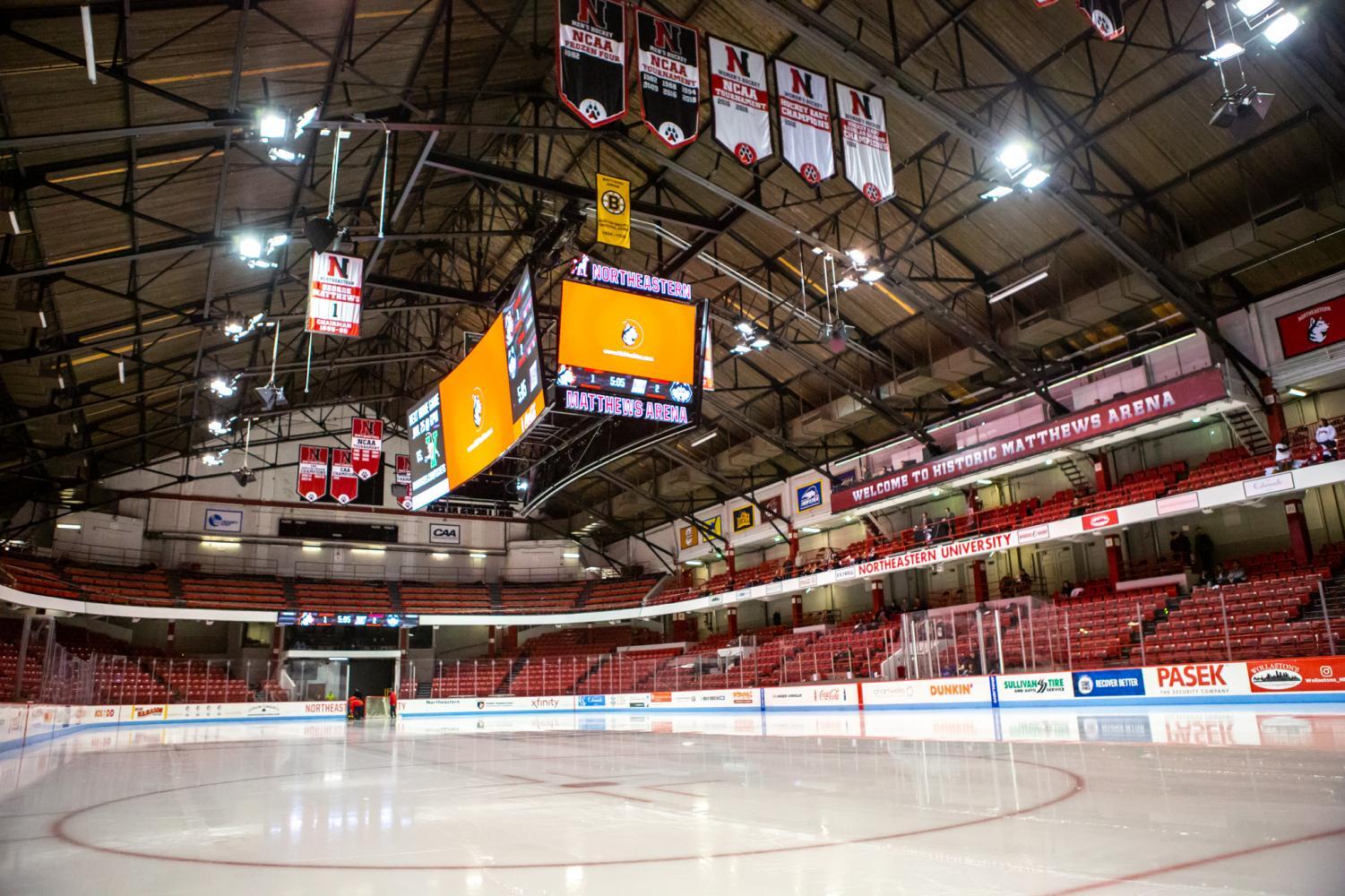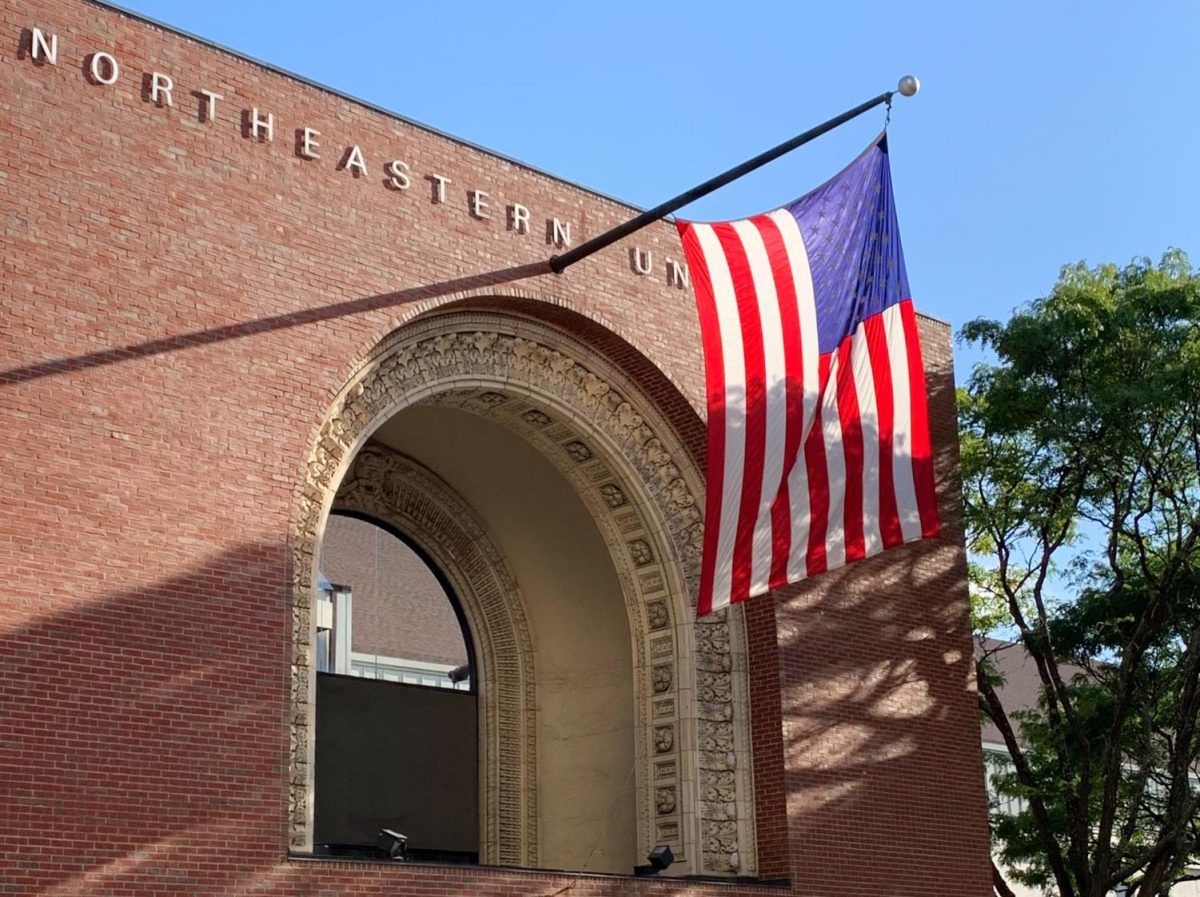The fate of the most historic hockey rink in the world is uncertain.
Documents released April 19 from the Massachusetts Executive Office of Energy and Environmental Affairs detail a plan for “Preclearing Excavation Work” at the 114-year-old Matthews Arena which, for the past several years, has seen increasing signs of structural issues. These plans include the removal of soil, chemicals and parts of previous building foundations.
The file contains documents from 2022 to 2024, and though earlier papers list the site as “Matthews Arena,” more recent reports for the same location are entitled “Multipurpose Arena” or “Northeastern University – New Arena,” indicating that the institution may have changed its plans for the historic arena.
The university is currently “explor[ing] opportunities to build a new arena in the near future,” a spokesperson said in a statement to The News.
“Matthews Arena is more than a century old and reaching the end of its useful life,” the university said. “It has recently undergone structural modifications that will temporarily extend its use. Simultaneously, the university has been making long-term assessments regarding the increasing demand for state-of-the-art athletic and recreational facilities, and the existing building’s limitations to meet them.”
More specific details regarding a new stadium were not made clear.
Over the past few years, concerns regarding Matthews Arena’s structural stability have risen — worries that were amplified when steel scaffolding went up on the west side of the building midway through the 2024 hockey season. On that side of the arena, student seating has been roped off, leaving fans without half of their DogHouse or explanation.
Matthews Arena last underwent renovation in 2012 with changes to the building’s interior, including updates to the locker rooms and the addition of a high-tech scoreboard and sound system. At the time, Northeastern was also looking to extend the historic venue’s reach to the outer limits of the parking lot as part of a reimagined athletics complex, but as new information has come to light regarding environmental concerns and rumors of the arena’s foundation sinking, the university has yet to announce any official construction plans.

The environmental documents regarding Northeastern’s plans were filed by Haley & Aldrich, an environmental engineering firm for consultation on foundation renovations. Mark Haley, director of Haley & Aldrich, serves on the Department of Civil and Environmental Engineering Industrial Advisory Board.
After surveying the Matthews Arena lot, Haley & Aldrich reported concentrations of lead, asbestos and other toxic chemicals within the soil. In accordance with state laws regarding hazardous waste, the Massachusetts Department of Environmental Protection released plans to completely uproot the parking lot bordering Gainsborough Street by removing 5,000 cubic yards of soil from the site.
The land that Matthews Arena sits on was once part of Boston’s original wharf, with the west side existing as shoreline and the east bordering the ocean. Although it was replaced with man-made land in the late 19th century as part of a larger effort to fill in the 200-year-old Mill Pond that once existed in what’s now Boston’s Back Bay neighborhood, it left behind high concentrations of clay, which expands when wet and contracts when dry, and surface-level sand, which shifts easily and can be damaging to adjacent structures.
Deep under the lot, bedrock provides a sturdy base, but it has weathered over time, no longer up to its usual caliber. Furthermore, row houses stood tall on that block, along the coast, in the mid-1800s. Their destruction left behind debris, including brick, glass, porcelain and chrysotile asbestos, prompting the need for a speedy removal today.
With so many beneath-the-surface issues evident just to the west of the building, the external scaffolding was implemented “out of abundance of caution,” according to Athletic Director Jim Madigan.
But where to go from here?
Although the land composition poses an issue to the arena’s structural stability, construction at Matthews would likely present a multitude of other issues.
Matthews Arena is bordered by the Orange Line’s Massachusetts Avenue stop and the New England Conservatory, so a major building project would likely cause a disruption to public transportation and to the neighboring school.
Additionally, three Northeastern teams would be without a home.
Men’s basketball would likely join the women’s squad in playing at the Cabot Center, but the men’s and women’s ice hockey teams are the true prizewinners of the university’s athletics program, bringing in a number of Olympic athletes, future NHL stars and quite a bit of glory and attention. The lack of an on-campus arena would likely place the Huskies at Walter Brown Arena or the Warrior Ice Arena, both a hike from Northeastern’s campus. They’d lose proximity and a majority of their fan base, making top-tier athletes much less likely to join the school’s athletics program.
Finally, concern lies with the arena’s historical value. Matthews Arena is not just a figurehead of Northeastern’s campus, but also a major part of Boston’s history. The former Boston Arena is the original home of both the Bruins and the Celtics, the site of America’s first NHL game and the oldest hockey rink in the world. Over the past 114 years, the arena has established itself as a monument to sports, garnering national honor.
Although its history will forever be interwoven with Boston’s, the recent findings prompt concerns for the building’s future. Time appears to be running out for the historic Matthews Arena.
Editor’s Note: This story was updated May 9 at 10:30 a.m. to correct the age of Matthews Arena. It is 114 years old, not 124.










